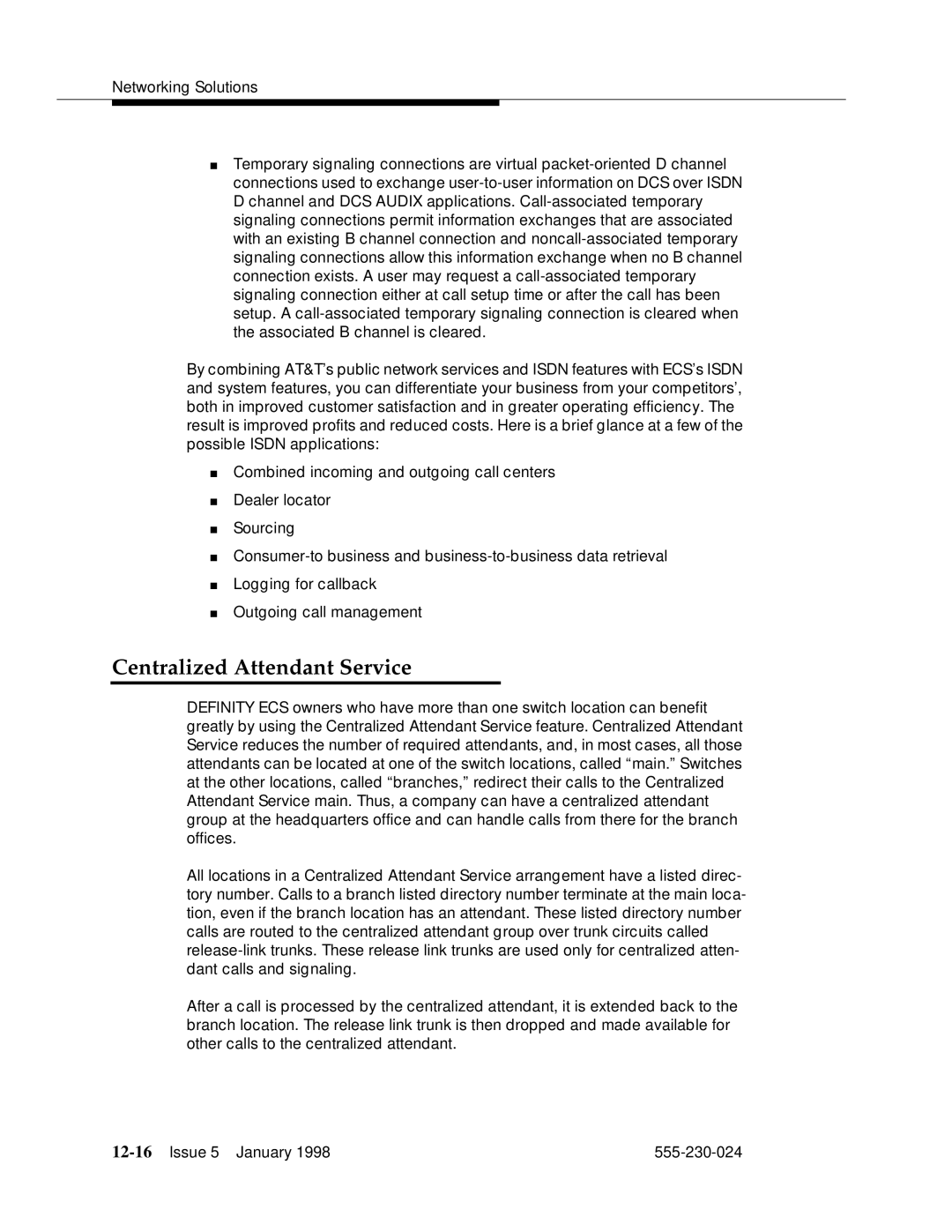
Networking Solutions
■Temporary signaling connections are virtual
By combining AT&T’s public network services and ISDN features with ECS’s ISDN and system features, you can differentiate your business from your competitors’, both in improved customer satisfaction and in greater operating efficiency. The result is improved profits and reduced costs. Here is a brief glance at a few of the possible ISDN applications:
■Combined incoming and outgoing call centers
■Dealer locator
■Sourcing
■
■Logging for callback
■Outgoing call management
Centralized Attendant Service
DEFINITY ECS owners who have more than one switch location can benefit greatly by using the Centralized Attendant Service feature. Centralized Attendant Service reduces the number of required attendants, and, in most cases, all those attendants can be located at one of the switch locations, called “main.” Switches at the other locations, called “branches,” redirect their calls to the Centralized Attendant Service main. Thus, a company can have a centralized attendant group at the headquarters office and can handle calls from there for the branch offices.
All locations in a Centralized Attendant Service arrangement have a listed direc- tory number. Calls to a branch listed directory number terminate at the main loca- tion, even if the branch location has an attendant. These listed directory number calls are routed to the centralized attendant group over trunk circuits called
After a call is processed by the centralized attendant, it is extended back to the branch location. The release link trunk is then dropped and made available for other calls to the centralized attendant.
